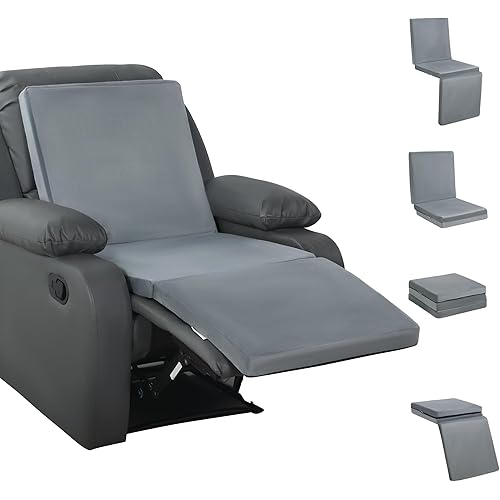SanDisk 512GB Extreme microSDXC UHS-I Memory Card with Adapter - Up to 160MB/s, C10, U3, V30, 4K, A2, Micro SD - SDSQXA1-512G-GN6MA






Buy Now, Pay Later
- – 6-month term
- – No impact on credit
- – Instant approval decision
- – Secure and straightforward checkout
Ready to go? Add this product to your cart and select a plan during checkout.
Payment plans are offered through our trusted finance partners Klarna, Affirm, Afterpay, Apple Pay, and PayTomorrow. No-credit-needed leasing options through Acima may also be available at checkout.
Learn more about financing & leasing here.
Selected Option
Returnable until Jan 31, 2026 Learn more
To qualify for a full refund, items must be returned in their original, unused condition. If an item is returned in a used, damaged, or materially different state, you may be granted a partial refund.
To initiate a return, please visit our Returns Center.
View our full returns policy here.
Recently Viewed
Style: Card Only
Capacity: 512GB
Features
- Up to 160MB/s read speeds to save time transferring high res images and 4K UHD videos (2); Requires compatible devices capable of reaching such speeds
- Up to 90MB/s write speeds for fast Shooting; Requires compatible devices capable of reaching such speeds
- 4K UHD and Full HD Ready (2) with UHS Speed Class 3 (U3) and video Speed Class 30 (V30) (5)
- Rated A2 for faster loading and in app Performance (8). Compatible with microSDHC, microSDXC, microSDHC UHS-I, and microSDXC UHS-I supporting host devices
- Built for and tested in harsh conditions: temperature Proof, Water Proof, shock Proof and x ray Proof(4)
- Get the SanDisk Memory Zone app for Easy file management (available on Google Play) (3)
- Order with Your Alexa Enabled device; Just asks 'Alexa, order SanDisk microSD'
Description
With the SanDisk Extreme 512GB (1) microSD UHS-I Memory Card get extreme speeds for fast transfer, app performance, and 4K UHD video. (2) Ideal for your Android smartphone, action cameras or drones, this high-performance microSD card handles 4K UHD video recording, Full HD video and high-resolution photos. The super-fast SanDisk Extreme microSDXC memory card reads up to 160MB/s and writes up to 90MB/s. Plus, it’s A2-rated, so you can get fast application performance for an exceptional smartphone experience. (7) | Not all devices support microSD memory card formats. Check with your device manufacturer for more details. | For 128GB-1TB: Up to 160MB/s read speeds, engineered with proprietary technology to reach speeds beyond UHS-I 104MB/s, requires compatible devices capable of reaching such speeds. Up to 90MB/s write speeds. 1MB=1,000,000 bytes. | (1) 1GB=1,000,000,000 bytes. Actual user storage less. | (2) Compatible device required. Full HD (1920x1080) and 4K UHD (3840 x 2160) support may vary based upon host device, file attributes and other factors. | (3) Download and installation required. | (4) Card only. See SanDisk website for additional information and limitations. | (5) UHS Speed Class 3 (U3) designates a performance option designed to support real-time video recording with UHS-enabled host devices. Video speed class 30 (V30), sustained video capture rate of 30MB/s, designates a performance option designed to support real-time video recording with UHS-enabled host devices. | (6) Registration required; terms and conditions apply. | (7) For 64GB-1TB: A2 performance is 4000 read IOPS, 2000 write IOPS. (8) Read only; based on internal testing. Results may vary based on host device, file attributions and other factors.
Brand: SanDisk
Model Name: Extreme
Flash Memory Type: Micro SD, Micro SDHC, Micro SDXC
Memory Storage Capacity: 512 GB
Compatible Devices: Camera, Smartphone
Color: Red
Special Feature: Drop Proof, Temperature Proof, Water Proof, X Ray Proof
Read Speed: 160 Megabytes Per Second
Item Weight: 4.54 Grams
Write Speed: 90 MB
Hardware Interface: microSDXC
Secure Digital Association Speed Class: Class 10
Product Dimensions: 0.59"L x 0.43"W
Manufacturer: Western Digital Technologies, Inc.
UPC: 619659173760
Global Trade Identification Number: 60
Item model number: 6.19659E+11
Item Weight: 0.16 ounces
Item Dimensions LxWxH: 0.04 x 0.59 x 0.43 inches
Language: English, English, English, English
Is Discontinued By Manufacturer: No
Date First Available: April 15, 2019
Frequently asked questions
Similar Products
Top Amazon Reviews
🚀 Abunda's Overview
This is our summary and key points to consider based on customer reviews.
The Sandisk Extreme micro SD card receives generally positive reviews, with users praising its function in the Steam Deck and car dashcam, where it performed flawlessly despite constant use. However, a few customers have expressed concerns about overheating during large file transfers, slower transfer speed than a USB 3.1 port with a thumb drive, and other functionality issues related to app running and simultaneous data transmission.
Pros
- 😀 Great for expanding storage on devices like the Steam Deck
- 👍 Consistent performance in intensive uses like car dashcam
- 🚀 Speedy load times for games
- 🔁 Flawless multiple video recording and rewriting
Cons
- 😓 Tendency to overheat during large file transfers
- 💾 Slower transfer speed compared to a USB 3.1 port with a thumb drive
- 📲 Possible performance issues when reading and writing small files for multiple apps at the same time
Should I Buy It?
Despite some concerns, the Sandisk Extreme micro SD card has demonstrated good performance in all reviewed uses, from gaming to car dashcams. If you can make use of its high storage capacity and don't heavily depend on the swift transfer of large files, it's definitely worth considering.
















![[Older Version] SanDisk 128GB Extreme PRO SDXC UHS-I Card - C10, U3, V30, 4K UHD, SD Card - SDSDXXY-128G-GN4IN](https://m.media-amazon.com/images/I/71TRuPdTPEL._AC_US500_.jpg)
![[Older Version] SanDisk 128GB Ultra microSDXC UHS-I Memory Card with Adapter - 120MB/s, C10, U1, Full HD, A1, Micro SD Card - SDSQUA4-128G-GN6MA](https://m.media-amazon.com/images/I/61EF7HnrWqL._AC_US500_.jpg)






